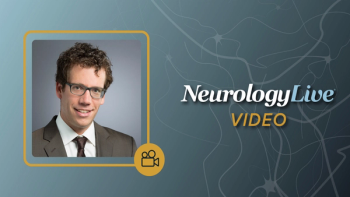
Patent Filed by Avicanna for Novel Cannabinoid Formulation in Epilepsy
Preclinical results showed promise for the investigational formulation in reducing seizures, prompting the patent filing.
A patent application has been filed by Avicanna for a novel cannabinoid formulation for the potential use in reducing seizures and sudden unexpected death in epilepsy (SUDEP).1
The provisional patent, entitled “Methods for Reducing or Eliminating Incidence of Seizures and Sudden Unexpected Death in Epilepsy,” was filed following promising preclinical results from the ongoing multi-level cannabinoid-based collaboration, led by Peter Carlen, MD, FRCPC, senior scientist at the Krembil Research Institute, University Health Network.
The cannabinoid formulation, also known as the “formulation candidate,” was evaluated in preliminary electrophysiological studies, using seizure-induced wildtype mouse cortical slices. When compared to treatment with cannabidiol or tetrahydrocannabinol alone, the cannabinoid formulation was found to produce significant anticonvulsant effects.
Results from the in vitro model suggest that the treatment may have potential to be used in patients with intractable forms of epilepsy, as well as those who are at risk of seizure induced SUDEP. Additionally, much like the established 5-HT1A receptor agonists, studies of the treatment’s mechanism of action of the cannabinoids within the formulation candidate showed that they acted as selective 5-HT1A receptor agonists during seizure-like events.
READ MORE:
“Understanding the anticonvulsant properties of our proprietary formulation in seizure disorders is important particularly since this combination drug has potential to reduce the likelihood of seizure-induced sudden death in epilepsy,” Aras Azadian, CEO, Avicanna, said in a statement.1 “The exceptional research conducted by Dr. Carlen’s team with support from our R&D team, and the resulting patent submission will be a major driver for guiding our long-term drug and clinical development plans, particularly since it’s in the area with an existing FDA approved cannabinoid-based drug.”
Further in vivo studies are anticipated to be conducted in the coming months, which will formalize the provisional patent application.
Recent Research Efforts in SUDEP
A recent nationwide retrospective population-based cohort study of Danish citizens aged less than 50 years old revealed
The final dataset included 3,838,293 individuals—30,437 (0.8%) of whom had prevalent epilepsy—who were followed for 10,456,143 person-years. Despite only representing 0.8% of the population, 700 of the 7825 recorded deaths were by persons with epilepsy, corresponding to 8.9% of all deaths. In comparison, 0.2% of persons without epilepsy died during the study period. Of the notable findings, persons with epilepsy had an almost 11-fold increased all-cause mortality rate and a 34-fold increased risk of SUD compared with the general population.2
Additional recently published literature also highlighted the potential of a proposed inventory tool for predicting SUDEP. The tool, dubbed
Gaps in SUDEP Education, Medical Trainee Knowledge
While the risk remains prevalent, gaps remain when it comes to epilepsy education, specifically surrounding SUDEP. Fabio Nascimento, MD, clinical fellow at Massachusetts General Hospital, recently spoke with NeurologyLive regarding his research on the alarming
“The most alarming finding was the lack of awareness and knowledge on about strategies to prevent SUDEP. That’s all we have. There’s no medication or anything you can prescribe to cure SUDEP,” Nascimento said regarding the importance of understanding SUDEP risk factors. “It entails you knowing or selecting the high-risk patients and then counseling them in an appropriate fashion. That includes telling them to be compliant with their medications so that they avoid their convulsive seizures and therefore, your risk of SUDEP is lowered. Reminding them to not drink alcohol in excess because it’s a risk factor as well. Or if you have nocturnal seizures, there are devices out there that you can buy or go through your insurance that could potentially save your life.”
Nascimento has remained at the forefront of addressing gaps within epilepsy education, taking an analytical approach. In December 2020, he published a
REFERENCES
1. Avicanna files US patent application for a novel cannabinoid formulation in reducing incidence of seizures and sudden unexpected death in epilepsy. News release. Avicanna Inc. September 24, 2021. Accessed October 7, 2021. https://www.globenewswire.com/news-release/2021/09/24/2302894/0/en/Avicanna-Files-US-Patent-Application-for-a-Novel-Cannabinoid-Formulation-in-Reducing-Incidence-of-Seizures-and-Sudden-Unexpected-Death-in-Epilepsy.html
2. Klovgaard M, Lynge TH, Tsiropoulos I, et al. Sudden unexpected death in epilepsy in persons younger than 50 years: a retrospective nationwide cohort study in Denmark. Epilepsia. Published online August 21, 2021. doi:10.1111/epi.17037
3. Rasekhi RT, Devlin KN, Mass JA, et al. Improving prediction of sudden unexpected death in epilepsy: From SUDEP-7 to SUDEP-3. Epilepsia. Published online June 4, 2021. doi: 10.1111/epi.16928.
4. Nascimento FA, Laze J, Friedman D, Lam A, Devinsky O. SUDEP education among US and international neurology trainees. Epilepsy Behav. Published online June 7, 2021. doi: 10.1016/j.yebeh.2021.108098
Newsletter
Keep your finger on the pulse of neurology—subscribe to NeurologyLive for expert interviews, new data, and breakthrough treatment updates.



























